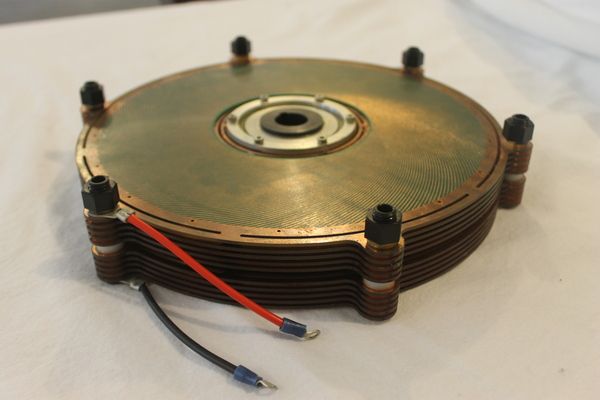A prototype electric motor that uses a new principle for transforming electricity into rotary force is being developed at C-Motive Technologies, a company co-founded by UW-Madison assistant professor Dan Ludois.
Photo: Dan Ludois
A tabletop motor using an entirely new driving principle is under development at the headquarters of C-Motive Technologies, a startup business that is commercializing technology from the College of Engineering at UW-Madison.
“We have proven the concept of a new motor that uses electric fields rather than magnetic fields to transform electricity into a rotary force,” says company co-founder Dan Ludois, an assistant professor of electrical and computer engineering at the UW. The distinction may sound minor, but it could solve a number of practical problems while saving money, he explains.
Actually, the concept is not entirely new: Benjamin Franklin and others described and built motors based on electrostatic forces back in the 18th and 19th centuries, but none achieved practical operation. Since the widespread adoption of electric motors a century ago, magnetism has been the only practical source of rotation. Magnetism is easier to exploit than electrostatic fields due to the properties of naturally occurring materials and simple engineering techniques. However, new advances in materials, mechanical engineering and advanced manufacturing may enable electrostatic motors.
In 2011, while Ludois was finishing a Ph.D. thesis at UW-Madison, he realized that instead of relying on magnetic fields, he could achieve a similar result by manipulating electric fields to create a motor based on electrostatic attraction. The new technique, he realized, could deliver major advantages in weight, material cost, operating efficiency and maintenance requirements.
For more detail: An Electrostatic Motor

